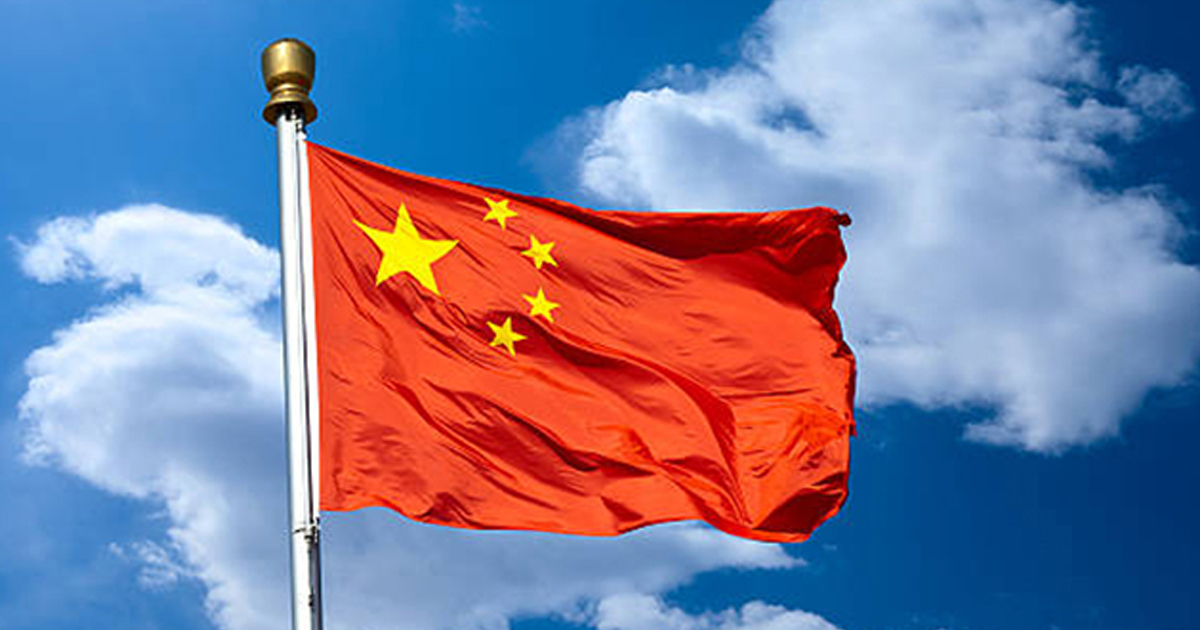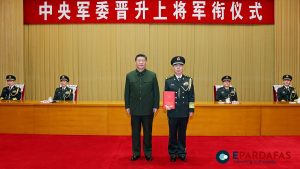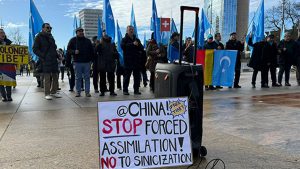
Urumqi Tragedy Sparks Unrest: China Reflects on the White Paper Movement’s Anniversary
Urumqi’s high-rise residential building fire on November 24, 2022, which claimed the lives of at least 10 people and injured nine, ignited a wave of protests across China, marking a turning point for the nation. The incident, coupled with dissatisfaction over Beijing’s stringent zero-COVID policy, led to widespread demonstrations challenging the Chinese Communist Party’s authority.
Protestors, primarily comprised of students and young individuals facing economic uncertainties, demanded an end to zero-COVID measures and denounced the authoritarian rule of the Chinese government. The movement gained momentum as people took to the streets in cities like Shanghai, Beijing, Chengdu, and even Wuhan, where COVID was first identified.
The catalyst for the protests was the revelation that victims of the Urumqi fire might have been unable to escape due to locked doors, complying with COVID mandates. Holding blank sheets of white paper, symbolizing censorship, citizens gathered in Shanghai on November 26 for a vigil honoring the fire victims. The white paper protests rapidly spread nationwide, prompting the Chinese government to rescind all COVID restrictions.
However, this decision resulted in a surge of COVID deaths among vulnerable groups. A year later, some protesters remain in prison, while those released are under surveillance. Despite the crackdown, the spirit of the White Paper Movement endures, with citizens expressing a greater willingness to protest both boldly and subtly.
VOA Mandarin interviewed participants who highlighted the lasting impact of the movement. Anonymity or the use of pseudonyms was granted to protect their identities. Protesters pointed to a noticeable shift in societal attitudes, evident in events like Halloween celebrations in Shanghai where costumes conveyed dissenting views on Chinese figures and social issues.
A young man arrested in Shanghai during the protests remarked, “Although it has not achieved something substantive, it will leave a footnote in history. Nowadays, young people and college students are still willing to take to the streets.”
The White Paper Movement, considered China’s most confrontational national movement since the Tiananmen Square protests in 1989, has challenged stereotypes about a politically inert younger generation. Protests on university campuses have demonstrated that the desire for freedom among Gen Z remains despite patriotic education efforts.
Reflecting on the movement’s anniversary, Han Yun in Beijing stated, “After the white paper movement, everyone may have gone through a process of gradually overcoming fear.” She emphasized that the movement continues to inspire people to find ways to express themselves.
Recent incidents, such as protests following the sudden death of former Premier Li Keqiang, illustrate a growing willingness to challenge authority. However, the government has responded with detentions and strict censorship on social media platforms.
A college student in Beijing urged people not to forget those arrested and persecuted during the movement, emphasizing the importance of persisting in the fight for democracy and human rights. He warned, “If the entire system does not change, the next disaster will be in the not-too-distant future, and it will be even worse than this three-year lockdown.” As China reflects on the White Paper Movement’s anniversary, questions about the nation’s future trajectory and the resilience of its people persist.













Comments